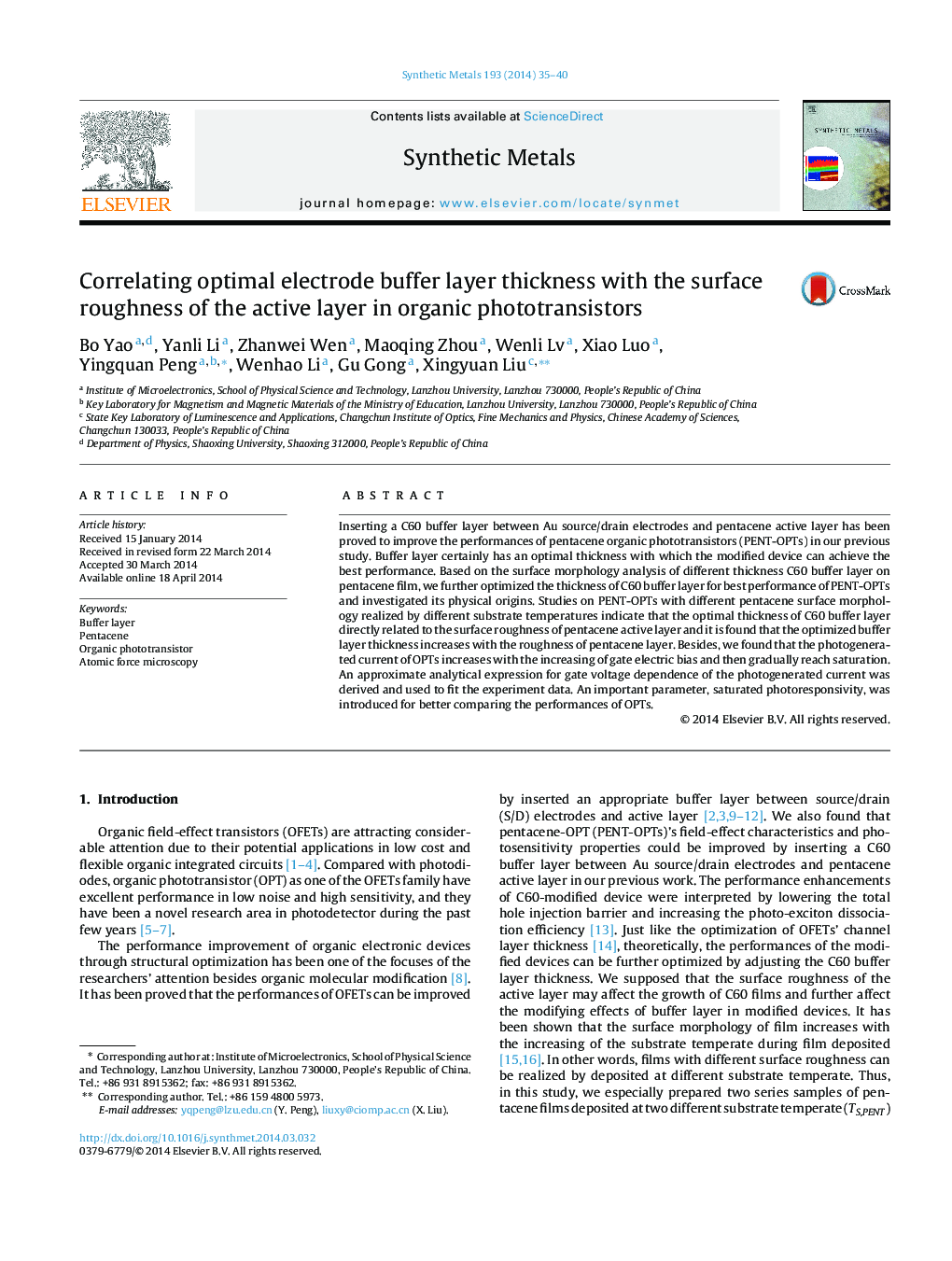| Article ID | Journal | Published Year | Pages | File Type |
|---|---|---|---|---|
| 1440975 | Synthetic Metals | 2014 | 6 Pages |
•The C60 buffer layer thicknesses of the modified pentacene-OPTs were further optimized.•The optimized buffer layer thickness increases with the increasing of the surface roughness of the active layer in OPTs.•An important parameter, saturated photoresponsivity, which can be used for comparing the performances of OPTs was introduced.
Inserting a C60 buffer layer between Au source/drain electrodes and pentacene active layer has been proved to improve the performances of pentacene organic phototransistors (PENT-OPTs) in our previous study. Buffer layer certainly has an optimal thickness with which the modified device can achieve the best performance. Based on the surface morphology analysis of different thickness C60 buffer layer on pentacene film, we further optimized the thickness of C60 buffer layer for best performance of PENT-OPTs and investigated its physical origins. Studies on PENT-OPTs with different pentacene surface morphology realized by different substrate temperatures indicate that the optimal thickness of C60 buffer layer directly related to the surface roughness of pentacene active layer and it is found that the optimized buffer layer thickness increases with the roughness of pentacene layer. Besides, we found that the photogenerated current of OPTs increases with the increasing of gate electric bias and then gradually reach saturation. An approximate analytical expression for gate voltage dependence of the photogenerated current was derived and used to fit the experiment data. An important parameter, saturated photoresponsivity, was introduced for better comparing the performances of OPTs.
Graphical abstractFigure optionsDownload full-size imageDownload as PowerPoint slide
